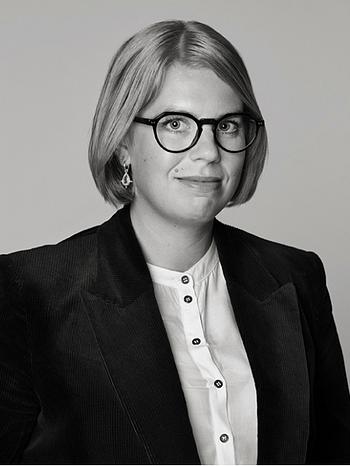Gunnar Löberg
"Handskar och galoscher I, II, III"
Signed and dated 1926 verso. Canvas 46 x 58 cm.
Exhibitions
Konstnärshuset, Stockholm, "Gunnar Löberg - utställning av hans intuitiva och hans instinktiva målningar, kvalitativa och kvantitativa verk", 24 April - 15 May, 1927, cat. no 9, 10, 11.
Konstnärshuset, Stockholm, "Gunnar Löberg 1893-1950 Minnesutställning", 25 April - 13 May, 1953, cat. no 3, 4, 5.
Norrköpings Museum, "Gunnar Löberg", 10 February - 11 March, 1973, cat. no 8, 9, 10.
Eskilstuna Konstmuseum, "Gunnar Löberg - Målningar från tre decennier", 12 October - 9 November, 1980, cat. no 7, 8, 9.
Literature
Bengt V. Wall, "Gunnar Löberg - Det förbisedda geniet", 1952, illustrated.
More information
From the outset of his artistic career, Gunnar Löberg was an independent painter who followed his own path. Despite his paintings showing traces of both expressionism and surrealism, he refused to submit to the theories of these or any other -isms. This makes his art difficult to define using traditional concepts. Already at his debut exhibition in 1927 at Konstnärshuset in Stockholm, where the suite "Hanskar och galoscher" was exhibited, Löberg emerges as a self-aware idealist with a clear vision of what he wanted to achieve with his art. Emotional and direct painting was valued over intellectual theories. Nevertheless, he had no lack of interest in analyzing his works. In the exhibition catalog, he explains and delineates his exhibition in four different languages using the value theories of the Polish philosopher Ernst Zierer, which advocate feeling and experience within art. In Djursholmstidningen on April 22, 1927, Löberg writes: "As an artist, I do not fight for ideas. I only fight for artistic values and, therefore, seek to establish a 'value schema.' The word 'motif' is something repulsive to the value perspective, whether it appears to us in a concrete or abstract form. It has all these epidemic occurrences of 'directions' and 'isms' and their exaggerated reputation on their conscience."
Löberg was born in Strängnäs in 1893 and, after his high school graduation, initially chose a military career due to pressure from his father. After completing his officer training, he served in the Armed Forces, where he was unhappy. In 1917, he resigned and devoted himself to art full-time. In the same year, he moved into a house on Ösbyvägen in Djursholm, where he would live for the rest of his life. His artistic education began at Althin's painting school in Stockholm and continued at the Royal Academy of Fine Arts, with Wilhelm Smith as his teacher. A few years later, he embarked on a study trip to Poland with the artist Beda Carlsson, who would become his second wife in 1930.
In his paintings, Gunnar Löberg created a parallel reality, often populated by peculiar objects and figures, especially toys and clowns, which frequently appeared in his still lifes. He painted with surreal tendencies long before the Halmstad Group introduced it on a broader scale in Sweden, and today his paintings appear surprisingly modern, foreshadowing postmodernism.
During his lifetime, Löberg's art received various reactions. While some praised him, he was often misunderstood and met with skepticism. The lack of understanding he encountered led him to withdraw more and more. After the 1939 exhibition, he isolated himself to a greater extent and avoided contact with the contemporary art scene. To prevent being influenced by other artists, he did not attend art exhibitions. Instead, he sent his wife to relay what she saw to him.



















































































